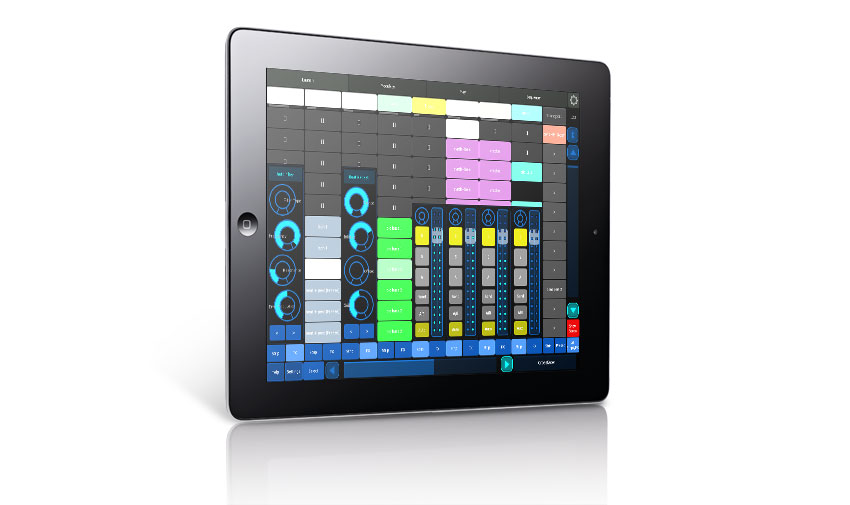MusicRadar Verdict
Futuristic and practical, flexible and portable, this is an Ableton Live controller everybody should try.
Pros
- +
Huge amount of Live control available immediately, with easy configuration. It's still user-editable, like all Lemur content. If you already have Lemur, this is a free download.
Cons
- -
Macro controls are slightly cramped.
MusicRadar's got your back
To many folks, Ableton's Push is now the undisputed boss of hardware controllers, but experienced users might disagree. Push is quite conservative, and we need to look elsewhere for more futuristic devices. Well, the future isn't so far away after all, because Liine have just released the LiveControl 2 template for their Lemur iOS app; this is good timing for iPad users who want some of that Push action!
Lemur users already had plenty of choice, thanks to the original LiveControl and Mu templates. Outside of Lemur, Liine also had the standalone Griid and Kapture Pad apps. Theoretically an update, LiveControl 2 is more like a greatest hits package, using features from each of those earlier designs.
Installation is simple, and unlike with Mu, Max For Live isn't required to manage the two-way communication between app and computer. It's a kick to open an existing Live set and see its clips, tracks, and scenes appear on the iPad screen.
Bouncing balls... check!
LC2 distributes control options over four tabbed pages. The Launch page equates to Live's Session View, showing clips, scenes, and tracks, updating automatically when anything in the set changes. It also hosts mixing functions - displaying controls for all tracks (with volume display), or individual tracks.
The same goes for a slightly cramped set of macro controls - in LC2, device controls are mapped automatically, which saves us a lot of time. This page also includes a teeny crossfader, and transport and tempo controls. As you'd expect, we can scroll through unlimited numbers of tracks and scenes.
"You can save settings as snapshots, and then use a crossfader to mix between two for unique morphing behaviour"
The Modulate page offers more detailed device interaction, including a quartet of Lemur's quasi-infamous bouncing balls, freely assignable to your chosen device parameters. You can save settings in this page as snapshots, and then use a crossfader to mix between two of these for unique morphing behaviour.
The Play page is somewhat Push-like, containing a grid-based note triggering layout, where scales and root notes can be set, and there's a single channel strip display which might save you swapping pages to control the same, or another, track.
Finally, the Sequence window allows you to edit MIDI notes and velocities within a chosen MIDI clip. It feels very intuitive to enter notes by drawing on the screen; choose different note values, adjust loop lengths, transpose, flip, and invert selections, and use an auto chord function to enter three or more notes simultaneously.
The future is free
LC2 is stable, responsive, and adapts well to iPad or iPad Mini. There are things we'd change: we can't set specific bpm, only to offset + or - from the current value; it's hard to read the white text clip names against the background colours at times. Unlike with Mu, and other 'smart' Live controllers, we can't jump through the scenes or tracks in blocks of eight, only singly, which is a nuisance in live situations.
We've used Lemur for live shows and will start using LC2; it mirrors Live's appearance, but uses custom layouts to reinterpret the interface when that's preferable. If you want tactile physical control, keep looking; but if you want the ultimate touch control of Live, this is it. And as a free add-on for Lemur, you can't argue with the price!

Martin Delaney was one of the UK’s first Ableton Certified Trainers. He’s taught Ableton Live (and Logic Pro) to every type of student, ranging from school kids to psychiatric patients to DJs and composers. In 2004 he designed the Kenton Killamix Mini MIDI controller, which has been used by Underworld, Carl Craig, and others. He’s written four books and many magazine reviews, tutorials, and interviews, on the subject of music technology. Martin has his own ambient music project, and plays bass for The Witch Of Brussels.
“This update reflects everything we believe modern gear should be”: Neural DSP gives the Nano Cortex an almighty power-up with free NanOS 2.0.0 system update
“It’s honestly got me thinking hard about adding one to my own studio set up”: Two Notes Reload II review
“Gloriously adorned with a gold edge burst finish over a gold paisley and sparkle top”: Gretsch unveils the Paisley Penguin – a rare bird that growls – and the Honey Dipper Special, a resonator for all your roots rock manoeuvres










